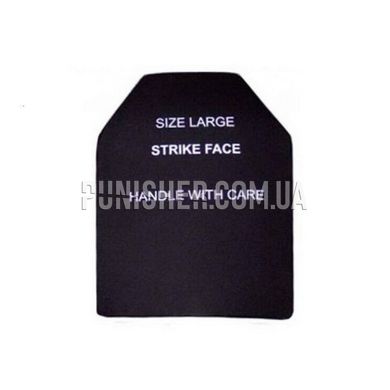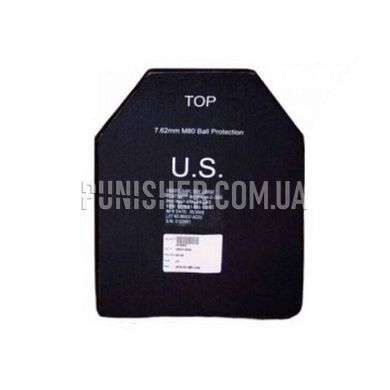|
In stock
|
Out of stock
|
||
|
|
|||
Protective ceramic armored plates in SAPI body armor (Small Arms Protective Insert)
- organoceramic composite protective elements.
SAPI inserts were designed as an element of Interceptor Body Armor,
and were intended for use in the Interceptor vest, but later,
due to the versatility planned for their creation,
became standard armor elements for almost all body armor used in the US military.
Created in the early 2000 to protect the infantryman from a fairly powerful
and most massive ammunition of small arms - a 7.62 mm NATO cartridge
with a conventional M80 bullet, muzzle energy 3519 J.
The main requirement for the creation of a new system of body armor was:
providing protection from the M80 bullet of a high-speed rifle with a total mass of the body armor acceptable to an infantryman.
According to the military TU, the survivability of the armored panel should be determined by three defeats of the panel without penetration.
For SAPI when firing a conventional M80 bullet with a 7.62mm NATO cartridge at a speed of 840 m/s.
Equivalent to protection class: NIJ IV (USA) or DSTU 4 (Ukraine)
They serve to increase the level of protection of various body armor,
allowing such vests to be protected from a wide range of weapons.
They possess a two-layer construction generally accepted for ceramic armor elements -
an external monolithic ceramic layer located on a substrate.
On the front side of the armored panels, on top of the ceramic layer,
there is a protective layer designed to increase the operational survivability of the armored panel.
Outside the panel is covered with nylon.
Armor-piercing bullets can cause the end-to-end penetration of the SAPI armor panel
and the guaranteed incapacitation of the body armor carrier.
Large size - 260x337 mm.
Weight - 2.09 kg
The price is specified for 2 piece.













































































































































